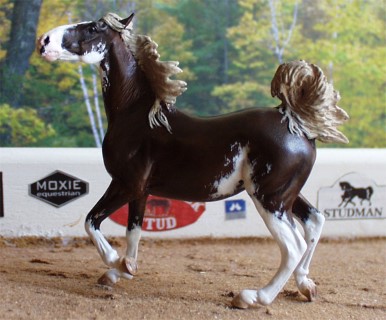Since 1850 breeders of the Costa Rican horse have paid morernattention to the selection of breeding stock. Because the horse population wasrnsmall and inbreeding became a concern, a few stallions were imported from Spainrnand Peru. The result is the Costa Rican saddle horse.
rnrnThe breed was founded by Janitzio, foaled inrn1955, a loudly marked sabino stallion. In 1972 a breed club (ASCACOPA) wasrnestablished, and in 1974 the breed registry was initiated.
rnrnThe minimum height for males is 14.2 1/2 hands (148 centimetresrn(58 in)) and 14.1 1/2 hands (146 centimetres (57 in)) for females. Their headrnprofile is straight or slightly convex. Their neck is arched, ample at the basernand tapered toward the head. Their chest is deep and well muscled, the barrelrnwell developed. Their back is short, with the underline being longer. Theirrncroup is long, well muscled and slightly rounded. The hair on their mane andrntail is fine, and their skin should be fine with short hairs. Their gait andrnmovements are performed with action and energy, their knees and hocks show highrnflexing during the rhythmic and harmonious trot.
